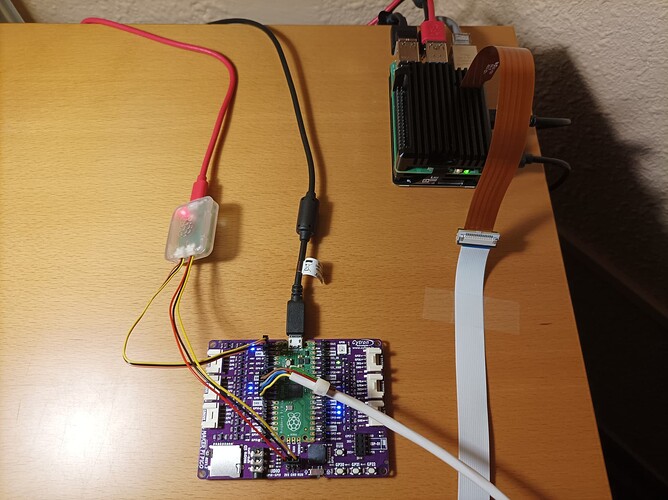Hi @dgalland,
I hadn’t thought of this possibility.
@PM490 suggested the option of using a Pico microcontroller, which I personally didn’t know about either.
Although it takes a bit of time to get to grips with how a new microcontroller works, in this particular case, using MicroPython, you can get very good results in a short time.
The designers of the Pico microcontroller had the brilliant idea of including programmable peripherals called state machines in the microcontroller itself. These state machines, once programmed, operate with their own clock, independently of the CPU, so that the timing of the motor control pulses is very precise.
RPi5-Pico communication is done relatively easily using a USB port on the RPi5 that is bridged to a UART on the Pico, using a Raspberry Pi Debug Probe and the Python serial module.
Using the Pico microcontroller also has the advantage of immunizing the system against future changes in the RPi hardware.
Here is a picture of my RPi5, with a prototyping board incorporating a Pico microcontroller and the Raspberry Pi Debug Probe.
